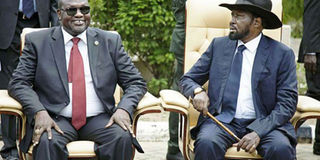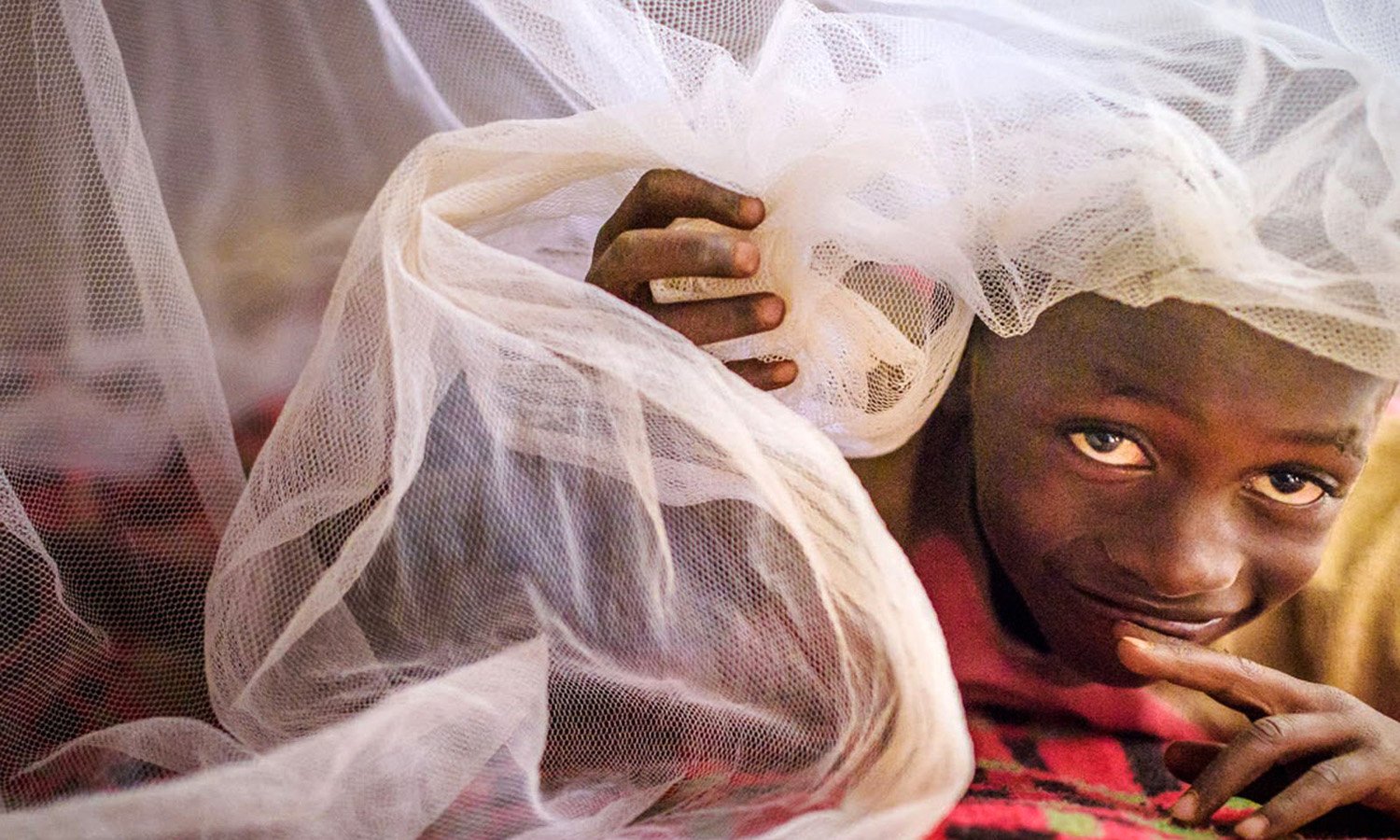South Sudanese back return to 10 states

South Sudan opposition leader Riek Machar and President Salva Kiir have failed to agree, delaying the formation of a transitional government of national unity. AFP PHOTO
What you need to know:
- Igad has been midwifing mediation in South Sudan, including talks on state boundaries.
- President Kiir and Dr Machar have failed to agree again, forcing another extension last month by 100 days for the formation of the transitional government. But as the clock ticks, there are fears this extension could also lapse.
The South Sudanese public strongly supported a return to the original 10 states despite Juba officials sticking to 32 or more.
A report by the Independent Boundaries Commission (IBC), a 14-member body created under the Revitalised Agreement on the Resolution of the Conflict in South Sudan, shows fewer people sided with the government position. After receiving 2,261 submissions from the public, it turned out 1,583 of them want South Sudan to return to the 10 states it had at independence in 2011, arguing they could be run better.
“With 10 states, increased border tensions between communities and current state governments would not exist. Ten states are more viable and manageable in terms of resource allocation and governance,” the report notes.
President Salva Kiir controversially created 32 states, after initially raising them from 10 to 28 in 2015, in order to improve administration of regions. But the decision made during the civil war has remained a sticking point, delaying negotiations and formation of the transitional government of national unity.
In their submissions to the IBC, the Sudan People’s Liberation Movement-in Opposition (SPLM-IO) headed by former vice president Riek Machar accused President Kiir of creating more states out of “individual thought…and as a presidential decree without any public consultation.”
In their defence, Juba officials told the IBC it would be easier to administer the country because systems are already in place.
BOUNDARIES
According to the June report by IBC, 163 people supported retention of 32 states. One person argued for 12 states, 268 asked for 21 states while 23 people said the country should be divided into three main regions while three asked for a unitary state. Others suggested 28, 32 plus1, or 32 plus 2. Those in favour of 21 such as the SPLM-IO argue it would be easy to draw boundaries by following the original 21 colonial districts. IBC could not reach consensus on a way forward.
In fact, Juba authorities may have ignored advice not to tinker with the number of states, in order to protect fragile peace and unity.
The IBC said there would be risks of raising the number of states beyond 21.
A group of five experts in the Commission, known as C5, had written to then Intergovernmental Authority on Development (Igad) Executive Secretary Mahboub Maalim explaining that South Sudan should revert to 10 states initially created, before discussing on whether to legitimise any increase.
“There was a strong voice that said there was relative peace and harmony among all the South Sudanese communities when they lived under 10 states. They believe that the increase to 28 and 32 states without public consultations had divided them into tribes,” the C5 indicated in June to Igad, a month after South Sudanese leaders failed to create a transitional government of national unity as planned.
The C5, made up of South African diplomat Thembisile Majola, Adamu Chindo from Nigeria, Rafik Naili (Algeria) and Edward Kyazze (Rwanda) proposed that any solution on the number of states must also include adequate independence being given to local experts in the Commission, following incidents of intimidation.
Igad has been midwifing mediation in South Sudan, including talks on state boundaries.
President Kiir and Dr Machar have failed to agree again, forcing another extension last month by 100 days for the formation of the transitional government. But as the clock ticks, there are fears this extension could also lapse.




